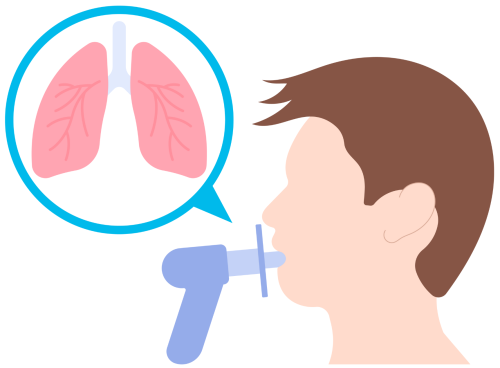Pediatric Lung Function Testing
Pediatric lung function testing
Lung function tests or Pulmonary function tests (PFT) are a crucial diagnostic tool to assess the health and efficiency of lungs. PFT provides an objective way to monitor how well the lungs are performing, particularly when symptoms like wheezing, coughing, or shortness of breath are present. These tests can be helpful in identifying respiratory conditions, such as asthma and other chronic lung diseases.

Common reasons for which pulmonary function tests may be performed in children include:
- Asthma diagnosis and management
- Undiagnosed chronic cough or wheezing
- Suspected interstitial lung diseases
- Prematurity related respiratory disorders
- Monitoring lung function after a severe/persistent respiratory infection
Types of Pulmonary Function Tests
There are several types of PFTs available, the choice of test often depends on the child’s age and ability to follow instructions. The common ones include:
Spirometry
Spirometry measures how much air a child can inhale and exhale, and how quickly they can expel air. During the test, the child will be instructed to take a deep breath and then exhale forcefully into the spirometer. The test may be repeated several times to ensure accuracy and the child’s best performance.
Peak Flow Measurement
The child blows into a handheld device (peak flow meter) that measures the speed at which air is exhaled. This is a more convenient test and can be performed regularly at home to allow early identification of an asthma flare-up.
Impulse oscillometry (IOS)
Unlike spirometry, which requires the child to exhale forcefully into a device, IOS measures lung function during normal breathing. This is particularly beneficial for younger children or those who may struggle with conventional tests, as it does not require the child to cooperate with complex breathing maneuvers.
How to prepare your child for lung function testing
- Explain the test and reassure the child.
- Ensure your child wears loose, comfortable clothing that allows for easy breathing.
- Your child may be asked to avoid using certain medications (like bronchodilators) for a few hours before the test. Follow your doctor’s instructions carefully to ensure accurate results.
- If your child is nervous, bringing along a toy can help them feel more at ease.
- To look for bronchodilator responsiveness, the test may be repeated 10-15 minutes after giving a few puffs of a bronchodilator.
